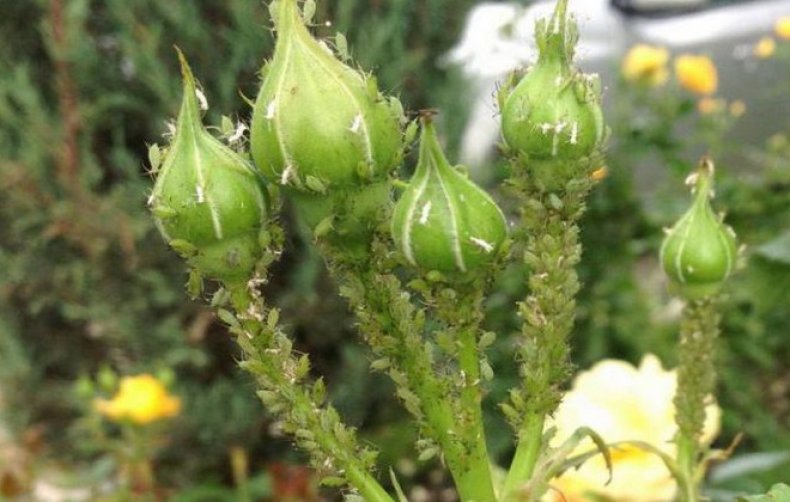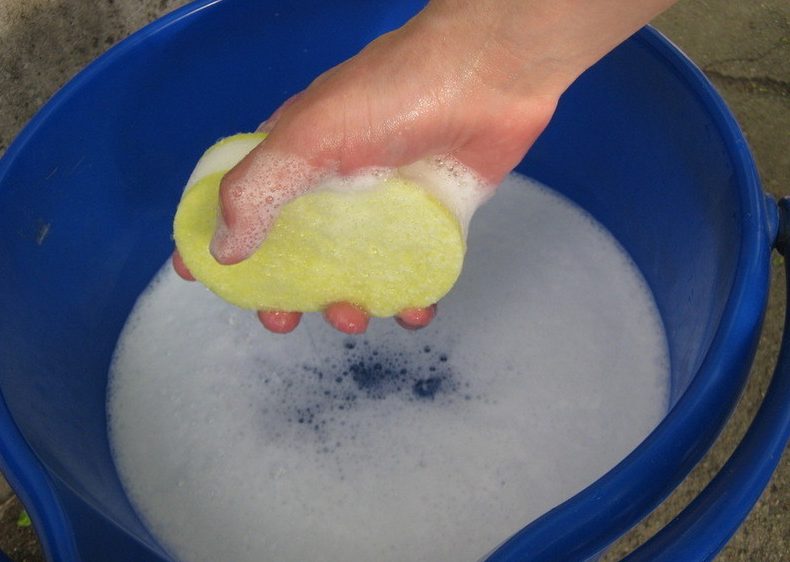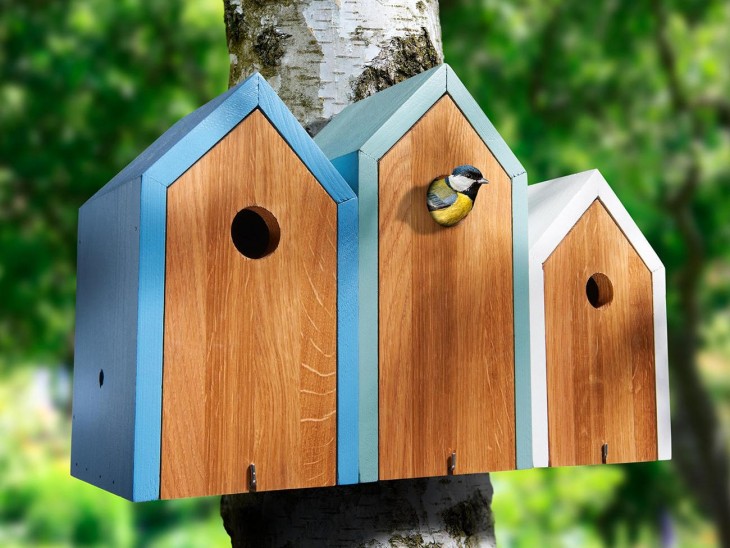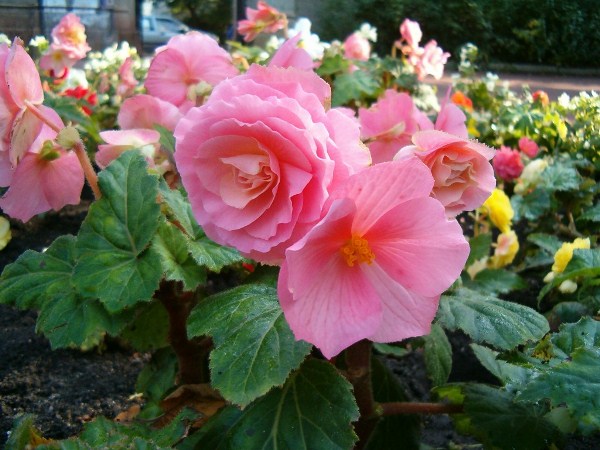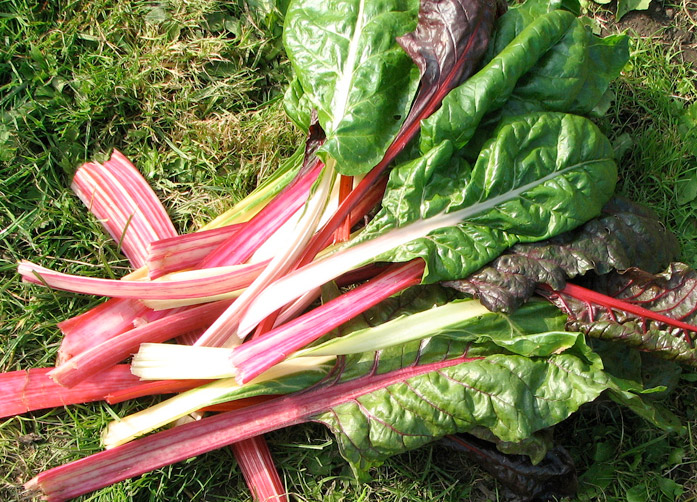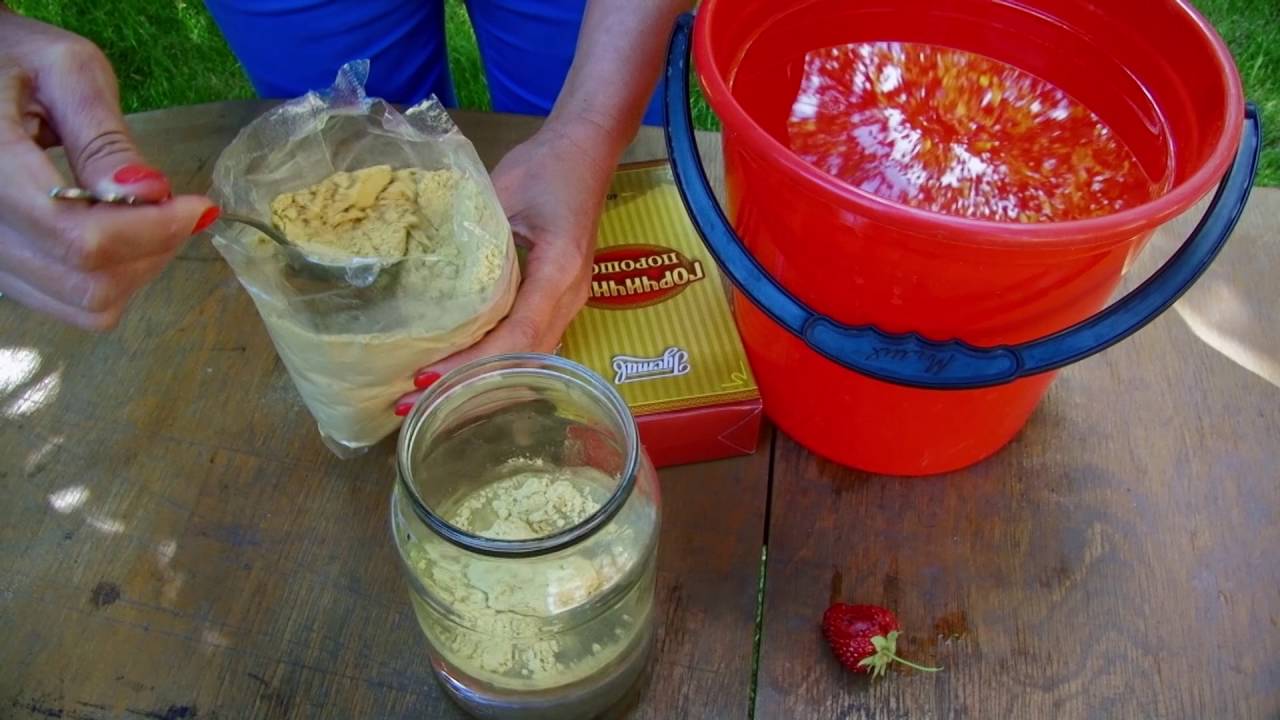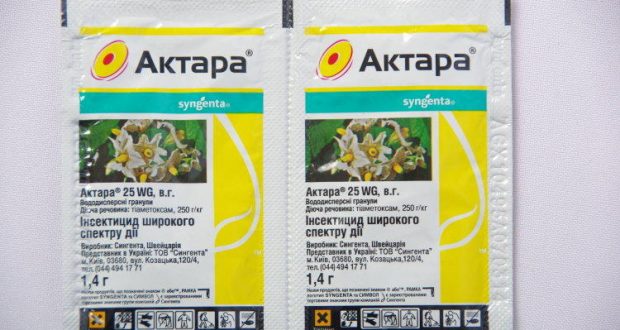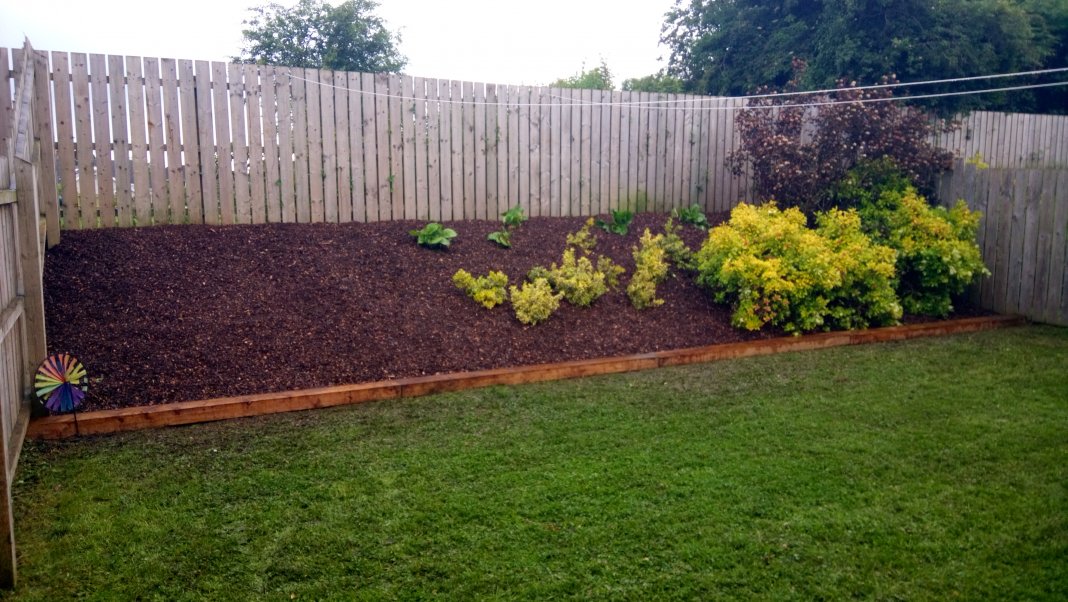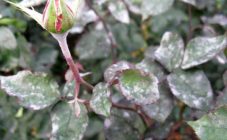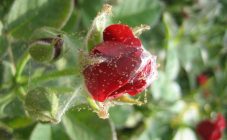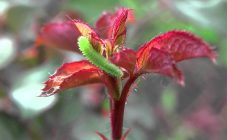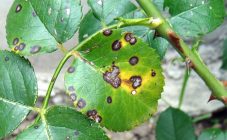Content:
With the onset of spring, aphids, small and very harmful insects, spread over the area with roses. In a short period of time, pests are able to destroy even large plantings. To prevent this from happening, the florist must be able to qualitatively and fight against them. To do this, he must know how to treat roses from aphids and what other ways to combat the pest are.
Short description
Aphids are one of the most common pests in the world. This includes about 4,000 species, a thousand of which are found in Europe. The color of insects is different and varies from green to red and white. The body length of aphids in most cases does not exceed 0.7 mm, and only some species reach 7 mm in length. The body shape is usually oval, but there are other options:
- hemispherical;
- elliptical;
- drop-shaped;
- ovoid.
Aphids belong to the category of phytophages that feed on plant tissue. A pointed proboscis is located on their body, with which they pierce plants and suck out the juice liquid from them. Together with the juice, they draw out amino acids and proteins, leaving in return carbohydrates and sugars in the form of a sticky sweet substance - honeydew, which attracts other pests - ants, flies, ticks, etc.
Insects are capable of massively flying and forming numerous colonies on the surface of roses and other affected plants. Most often they are located on the reverse side of the leaf blade. Damaged leaves begin to deform and dry out. After that, they twist into a tube and gradually die off. The stems of plants are strongly curved and stop growing as the number of insects increases. The flowers quickly fall off and become small. In advanced cases, a sooty fungus forms on the affected plants - a dangerous fungal disease.
Fight against aphids on roses
Mechanical method
This method is the simplest and safest, but not effective enough. It is preferable to use it in the early stages of the appearance of aphids. The grower should wear gloves and use his fingers to crush any insects he finds. Another type of their mechanical destruction is flushing. Being small insects, aphids are easily removed under running water and are subsequently destroyed by insects such as spiders, wasps or ladybugs. The latter method involves great care, since too much water pressure can break the bushes themselves.
Biological way
Aphids have many natural enemies in nature. Many of them do not pose a danger to roses, so their numbers can be increased. Insects that can kill aphids include:
- hoverflies;
- wasps;
- earwigs;
- rider Aphelinus;
- praying mantises;
- ladybugs;
- lacewing;
- ground beetles;
- gall midges-aphimidises;
- thrips, etc.
In addition to insects, aphids on roses are also destroyed by birds. Help to get rid of pests on the street:
- warblers;
- kinglets;
- wrens;
- sparrows;
- tits;
- linnet;
- robin robins.
In order to attract birds to your site with roses, it must be equipped with birdhouses, drinkers and other shelters for them.They are able to destroy not only aphids, but also a number of other pests. In this case, the grower will have to completely refrain from using chemicals on the plot.
In nature, there are a number of phytoncide plants that emit a powerful smell into the atmosphere. It repels most pests, including aphids. Winter garlic is a classic example of such a crop. It is allowed to plant both plant cloves and seeds. With the onset of spring, when fresh, strong stems are formed on the plant, they should be pruned by a few millimeters every one and a half to two weeks.
This increases the release of special substances into the atmosphere that will repel aphids. This procedure must be repeated until the onset of autumn, when the bulbs are dug out of the ground. Other crops with similar effects include:
- bow;
- medicinal plants (peppermint, lavender, lemon balm, thyme, marigold);
- spicy crops (fennel, arugula, basil, coriander, celery);
- flowers (feverfew, marigolds, dalmatian chamomile).
There are also such plants that are able to attract aphid colonies. They are planted for distraction so that the pest remains on these plants, which allows you to get rid of its presence on the desired crops. In this regard, at a safe distance from roses, you should plant:
- cosme;
- petunia;
- legumes;
- tuberous begonias;
- mallow;
- glue;
- nasturtium;
- poppy, etc.
The biological method of combating aphids on roses is attractive in that it requires minimal costs from the gardener with relatively high efficiency. However, the speed of action of this method is not so high in comparison with other methods.
Folk remedies
Methods belonging to this category are able to clear plantations of roses from aphid colonies in one to one and a half weeks. The advantage of this method is absolute environmental safety, no significant harm to plants. It consists in making preparations at home that would be able to destroy the pest. Most often they prefer to do the following options:
- Tops. Its smell has a repellent effect on pests. Tomato tops or foliage are soaked in a container with water at the rate of 5 kg of plant material per 10 liters of water. The solution is placed on a medium fire for a quarter of an hour. The boiled liquid is allowed to cool and it is poured into a bottle, after which the product is ready for use as directed. They can both spray roses and wipe the foliage with a sponge dipped in it. Potato tops have a similar effect. It also contains solanine, which is poisonous to aphids and other pests. 1.5 kg of tops are dissolved in 11 liters of cool water and, covering the container, leave it for 4 hours in the sun. Then the liquid is filtered off and the roses and the soil around them are poured over it. This measure brings about quick disposal of aphids.
- Garlic and onions. A few heads of onion (can be replaced with garlic) are cut into small pieces and rubbed with laundry soap. 10 g of each of the components are added to a liter container with water and infused until the soap is completely dissolved. The solution must be poured through a filter and sprayed on both affected and healthy plants.
- Kerosene. In 100 ml of boiled water, dilute 100 g of grated laundry soap and 0.2 l of kerosene. The solution is mixed thoroughly until the soap dissolves. Heated water is added to the liquid in a volume of 10 liters. Sprinkle roses with the resulting product weekly in the evenings. 24 hours after the next treatment, the plantings are watered abundantly with ordinary water to remove the remnants of kerosene from them.
- Sagebrush.In a 10-liter container with water, dilute with 0.7 kg of dried or 2 kg of fresh plant materials. The solution is boiled for a quarter of an hour and then insisted for another 4-5 hours. After that, the liquid is filtered off and immediately poured into a spray bottle. Plants are sprayed 2-3 times, about a week should pass between two treatments.
- Ash. In a liter of slightly warmed up water, 0.3 kg of ash is diluted. The solution is thoroughly mixed and left to infuse for several hours, after which the ash should settle to the bottom. When this happens, the liquid is carefully drained and dissolved in 5 liters of water. The resulting product can be watered with rose plantations.
- Milk. Mix 10 liters of distilled water and 1 liter of cow's milk. Iodine is added to the solution in a volume of 20 drops. The resulting product is not only able to remove aphids and other bugs from roses, but also to restore and strengthen the plant.
- Tobacco. One and a half kilograms of tobacco dust are dissolved in 10 liters of water. The solution is heated to a temperature of + 80C, but at the same time it is not allowed to boil. The liquid is left to infuse overnight, and with the onset of morning, the plants are filtered and spilled.
- Coca Cola. In a bottle of liquid, dissolve liquid soap in the volume of three spoons and shake the container vigorously several times. The resulting product is ready for use as intended. Inexpensive lemonade can be used as an alternative to Coca-Cola.
- Onion peel. 2-3 kg of the substance is poured into a saucepan and 5 liters of water are poured on top. The solution is heated over a fire until its color turns reddish. After that, the liquid is allowed to cool and two tablespoons of liquid soap are added to it. Rose plantings are processed weekly. This remedy can save the most delicate varietal roses from aphids.
- Ammonia. In a liter container with water, dilute 60 ml of the substance and spray the plants with the resulting product. This solution is able to remove aphids for one to one and a half weeks, after which the treatment is repeated.
- Mustard. Dissolve 100-200 g of mustard powder in a small amount of water. The result is a thick gruel, which is poured into a bucket of water and mixed thoroughly. The finished product is treated with roses.
Chemical method
The use of chemicals is the fastest and most reliable method to fight not only aphids, but also other harmful insects. At the same time, it is the most harmful for cultivated plantations, beneficial insects. If insecticides are handled incorrectly, harm can be caused to the person himself. The most common and effective drugs in this category are:
- Decis;
- Hostaquick;
- Kinmix;
- Intaverm;
- Fas;
- Bi-58;
- Bankcol;
- Confidor Topaz;
- Cypermethrin;
- Karate;
- Fitoverm;
- Alatar;
- Aktara, etc.
For prophylactic purposes, in early spring, roots and soil are treated in the bite sector with a urea solution. For 500 g of the drug, 10 liters of water are required. After a week, the soil is sprayed with copper sulfate (200 g / 10 l of water).
If the number of aphids is low, it is allowed to spray each plant with Dichlorvos and put a plastic bag on the roses, leaving it for half an hour. This method allows you to destroy adult pests. The larvae, which hide on the back of the leaf, are pressed with fingers or washed off with the pressure of water.
Aphids are able to quickly adapt to the drugs used, which gradually cease to harm them. Therefore, the insecticides used should be changed regularly. The drugs should be diluted at the recommended concentration, trying not to exceed it. Chemicals are used especially carefully in room conditions.
Preventive measures
Measures in this category should be applied before the aphid begins to actively live. So, in the autumn period, it is necessary to free the site or flower bed from all plant debris, crumbled rose petals and leaves, etc.All of these substances are usually the place where females place their eggs, from which young larvae form in spring. To prevent this from happening, the collected garbage must be incinerated.
Taking into account the peculiarities of the life cycle of aphids, the fight against it should begin at the very beginning of the spring period. Before the buds begin to swell, the plantings are treated with special oil and mineral substances. When the budding phase begins, the procedure is repeated. Its purpose is to destroy young insects that hatch from the egg clutch.
In the first three days, the caterpillars are still located on the surface of the buds and have not yet managed to adhere to young shoots, having begun to consume juice. It is during this period that it is necessary to keep within when carrying out preventive spraying. After 2-3 weeks, the plantings are sprayed again, trying to process the young foliage harder.
Throughout the growing season, the main preventive measure against aphids on roses will be a regular visual inspection of plantings for the presence of pests. Particular attention should be paid to the inside of the sheet plates. If insects are found, appropriate action should be taken as soon as possible.
Another preventive measure against aphids is the fight against ants. To this end, it is necessary to destroy anthills in the garden on the site and next to it. Insect dwellings are abundantly sprinkled with ground cinnamon or tobacco dust. It is also allowed to dilute table vinegar in water in a 1: 1 ratio and water the anthill with the resulting solution.
Any florist can easily choose the most suitable option for protecting plants from small green midges. It should be noted that the preventive method is mandatory for everyone. For beginners, the biological method of protecting roses is more suitable, which does not require special skills. Folk and chemical means should be used only by experienced summer residents who are familiar with safety precautions and are able to competently prepare the drug in the required concentration. In any case, a correctly selected method will allow you to cleanse plants from a dangerous garden pest without any problems.
